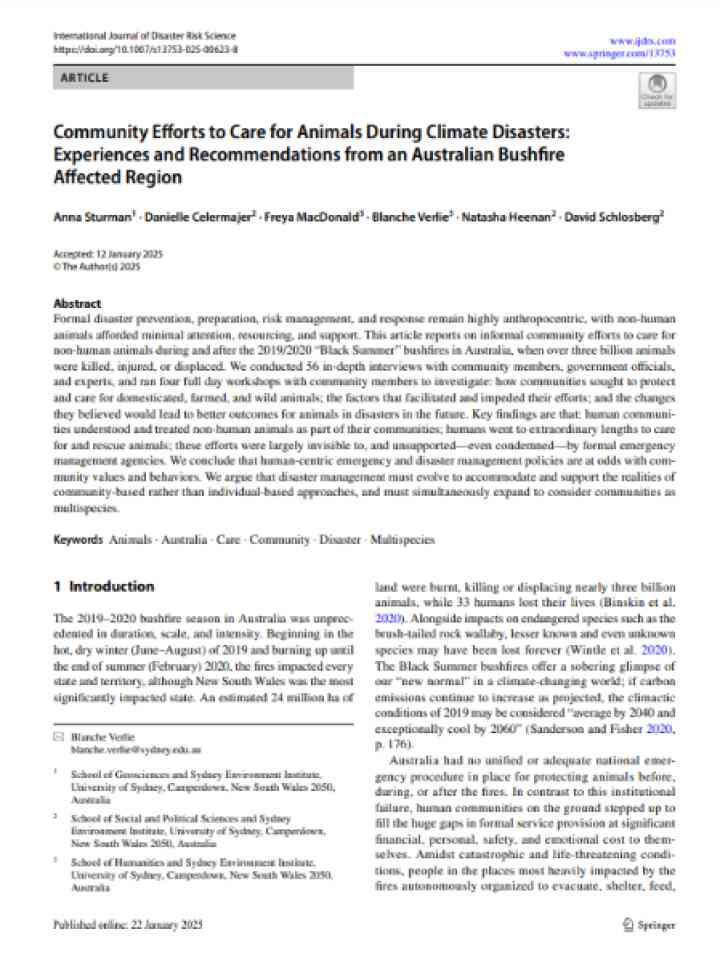Community efforts to care for animals during climate disasters: Experiences and recommendations from an Australian bushfire affected region
Formal disaster prevention, preparation, risk management, and response remain highly anthropocentric, with non-human animals afforded minimal attention, resourcing, and support. This article reports on informal community efforts to care for non-human animals during and after the 2019/2020 “Black Summer” bushfires in Australia, when over three billion animals were killed, injured, or displaced. The authors investigated how communities sought to protect and care for domesticated, farmed, and wild animals; the factors that facilitated and impeded their efforts; and the changes they believed would lead to better outcomes for animals in disasters in the future.
Key findings are that: human communities understood and treated non-human animals as part of their communities; humans went to extraordinary lengths to care for and rescue animals; these efforts were largely invisible to, and unsupported—even condemned—by formal emergency management agencies. The authors conclude that human-centric emergency and disaster management policies are at odds with community values and behaviors. We argue that disaster management must evolve to accommodate and support the realities of community-based rather than individual-based approaches, and must simultaneously expand to consider communities as multispecies.
Explore further
